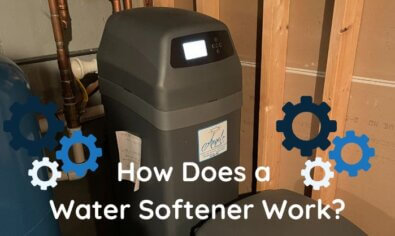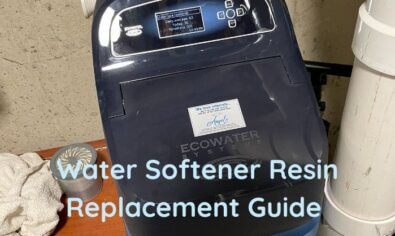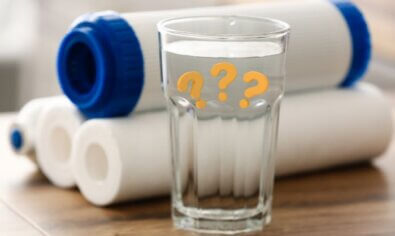Reverse Osmosis Water Filter: Why Choose One for Your Home?

So you’ve seen all the news stories about contaminated water supplies and lead leaching out of pipes, and you’ve decided that you need a water filter for your home to protect your health and that of your family. But what kind of filter do you need? Carbon? Ion Exchange? Ozone? Reverse osmosis? There are so many filtration methods to choose from, each able to handle a different collection of toxins and pollutants.
But if you want the cleanest, safest, highest-quality water, the strongest contender is a reverse osmosis system. When you compare the capabilities of such a system against those of other filtration systems and consider the significance of what those other systems leave behind, you may lean quite heavily toward choosing a reverse osmosis filter for your home.
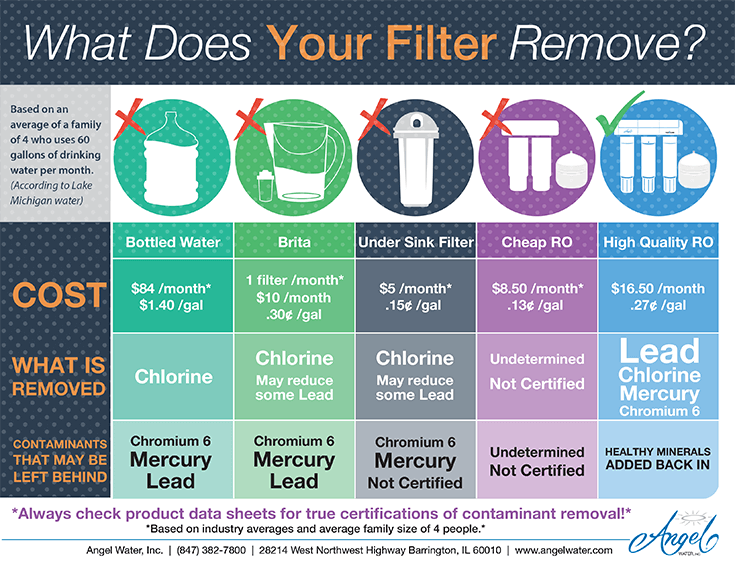
Here are the basics of what you need to know about reverse osmosis water filters.
How Does a Reverse Osmosis Water Filter Work?
Before anything else, you may find it helpful to learn how a reverse osmosis water filter works. Understanding this process starts with jogging your memory on something you may have learned in school.
What is Osmosis?
Osmosis, as you might remember having learned in school, is the process by which water molecules can pass through a membrane that other particles cannot. Water can pass through, and others can’t because the other particles have a charge or are too big.
Usually, water diffuses to the side with the higher solute concentration—that is, water passes to the side where there is a higher ratio of solute to water until these ratios are even and there is a balanced solute concentration on both sides of the membrane.
What is Reverse Osmosis?
In reverse osmosis, or RO, this force is reversed. Rather than move to the side with more solutes, the water pushes in the opposite direction. The water forces through the semipermeable membrane and the solutes—the calcium, arsenic, bacteria and other particles in your water—cannot follow.
How Does This Apply to a Reverse Osmosis Water Filter?
A reverse osmosis water filter uses the scientific process above to create clean, pure water for your family. Since most RO systems also use a carbon filter as part of their three or four-stage process, the water will taste and smell better.
The clean product water is known as the “permeate” water and goes on to your fixtures, where it can be used for whatever you need. If the reverse osmosis water filter is set up for your whole house, then the water will appear at every tap. If your RO water filter is an under-the-sink version, the permeate water will be limited to your kitchen sink.
Does a Reverse Osmosis Water Filter Waste Much?
It’s true that some of the water won’t make it to your taps because it’s too contaminated with toxins and other undesirables. However, this is only a small portion of water, and automatic processes are in place to reduce water wastage.
A small amount of water remains behind to wash the discarded solutes away. Then, this concentrated stream will either go to the drain or be recycled through your reverse osmosis water filter. This helps save water, which is great for the environment!
What Do Other Filtration Methods Remove?
To compare the effectiveness of reverse osmosis water filters against other types of filters, first, let’s review some of the other kinds of filtration systems available on the market and what exactly each type of filter removes from the water. We’ll compare three popular alternatives, including carbon, ceramic and deionization filters.
Carbon Filter
You’re likely most familiar with the carbon filter. Activated carbon chemically bonds with some pollutants in your water as it passes through the filter, but the effectiveness of such filters varies widely and is relatively limited.
Many of these filters only remove chlorine, while others can remove lead, mercury, asbestos and cancer-causing volatile organic compounds (VOCs), such as those left in Lake Michigan by boats. However, they cannot remove many common inorganic contaminants like chromium, nitrates, perchlorate, fluoride and arsenic.
Ceramic Filter
A ceramic filter, made from trillions of fossilized one-celled algae called diatoms, has microscopic pores that let water pass through but stop solid wastes like sediment.
The upside is that you can clean and reuse these filters many times before they lose their efficiency. They can also remove pathogenic bacteria (like E. coli), microbial cysts and specific chemicals. For example, most ceramic filters will remove chloroform and pesticides.
The downside? Ceramic filters aren’t great at removing chemical pollutants – a trait shared with other mechanical filters with tiny holes. While a few can be removed, most can’t, which means many contaminants will still make their way into your family’s drinking water.
Deionization Filter
Deionization is a chemical process that uses specially manufactured ion-exchange resins. Specifically, the process exchanges hydrogen and hydroxide ions for dissolved minerals. When this process is complete, the ions recombine to form water.
Unsure About Your Water Quality? Get a Free Water Test Today!
Contaminants can affect the safety and taste of your water. Get a free water test to check your water quality and see if a reverse osmosis system can help provide clean, pure drinking water.
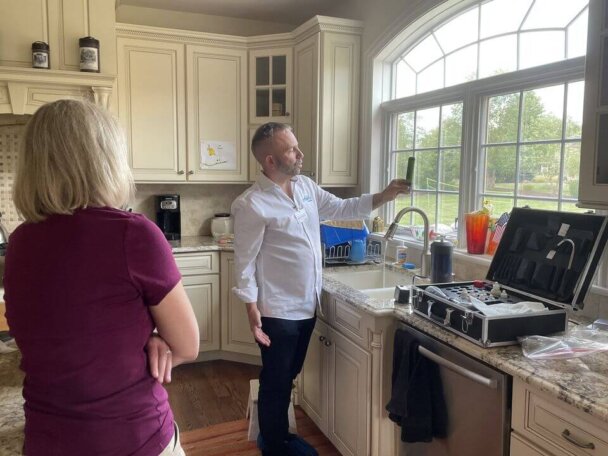
Deionization water filters use this chemical process to remove electrically charged molecules like mineral salts from water. Unfortunately, the process doesn’t remove microorganisms like E. coli bacteria or non-ionic contaminants like trihalomethanes and VOCs.
How Do Reverse Osmosis Water Filters Compare?
You may notice that all the above methods cannot filter out significant groups of contaminants. This is a problem because you never know which lurks in your water.
New York Times Study
The New York Times published a study that broke down water testing results in counties nationwide, finding that many contained pollutants. Chicago, for example, had elevated lead and radium levels that exceeded accepted health guidelines. Many other toxic substances were present but within the guidelines, including arsenic, chloroform, chromium, copper, molybdenum, and nitrates.
Outdated EPA Guidelines
However, while those substances were within the limits recommended in the guidelines, the guidelines aren’t set in stone and are regularly adjusted. The EPA is expected to complete a 6-year review this year, bringing regulatory changes for substances including lead and perchlorate.
The EPA telling you today that a concentration of some substance is safe won’t help you tomorrow when they tell you it wasn’t safe after all. That’s why it’s best to go beyond those recommendations. Especially so when you consider that risks are often posed not by regulated chemicals but by their byproducts. For example, the disinfectant chloramine’s use in municipal water supplies is regulated, but its VOCs are unscreened, unregulated, and potentially dangerous.
Municipal Water Supply Issues
Even when your municipal water supply seems generally fine, a mistake made any day can have severe and even deadly consequences. Inadequate chlorination and filtration resulted in over 400,000 Milwaukee residents falling ill due to cryptosporidium, a parasite that causes the watery diarrheal disease cryptosporidiosis. In 2000, a similar lapse in sufficient chlorination in Ontario resulted in seven dead and thousands ill due to an E. coli outbreak.

Reverse Osmosis as the Solution
Reverse osmosis alone will remove various contaminants, including arsenic, lead, chromium, nitrates, and perchlorate. While this process misses chlorine, trihalomethanes, and VOCs, many RO systems include an activated carbon component to pick up these remaining pollutants, forming a complete filtration system for the highest-quality drinking water.
NSF-Certification is a Must
Of course, many RO systems are out there, varying widely in price and quality. When choosing one, an important thing to look at is the product’s NSF certification. NSF International, formerly the National Sanitation Foundation, is an accredited, independent organization that develops standards and certifies manufacturer claims. You want an RO system that is NSF certified because this means that the claims in the product’s marketing have been independently verified.
Check Reverse Osmosis Water Filter Specifics
Being certified isn’t enough, though. You should check the specifics—for example, how many gallons each filter is certified to process before needing a replacement. A company like Brita might proudly feature its NSF certification seal in its copy, but they don’t tell you how many gallons that filter is certified for. One of those pitcher filters may only be certified for 25 gallons per replacement. This means that after 25 refills, the filter is no longer doing anything, yet most consumers will continue using it. This is why these carbon filters are less effective and expensive as they require constant replacements.
For these reasons, an NSF-certified RO system is the ideal solution to get the best, highest-quality drinking water. The EcoWater RO systems we provide and install are some of the best such systems.
Reverse Osmosis Water Filter FAQs
To help give you the most comprehensive understanding of reverse osmosis water filters, we’ve answered a few of the most asked client questions below. We hope you find them helpful!
Is reverse osmosis water safe to drink?
Yes! In fact, water that passes through a reverse osmosis water filter is one of the safest types you can drink. It often exceeds the safety of bottled water because it removes a broader range of contaminants.
Is reverse osmosis “dead water?”
Dead water is a term for water that has nothing in it, including the trace minerals that are good for us. No, you’re not creating dead water by using your RO water filter. However, we do recommend using a system that includes an additional filter that reintroduces minerals back into the water.

How often should I replace a reverse osmosis water filter?
Filter replacement schedules vary by manufacturer and usage. Generally, you should change pre-filters (sediment and carbon filters) every 6-12 months, while the RO membrane typically lasts 2-3 years before needing replacement.
How can I keep my reverse osmosis water filter system maintained?
Regular maintenance includes changing filters on schedule, sanitizing the system annually, and checking for leaks or unusual noises. Follow manufacturer guidelines for maintenance to ensure optimal performance and longevity of your RO system. Angel Water also offers professional maintenance and guidance!
Get a Reverse Osmosis Water Filter for Your Barrington, IL, Home Today!
Ready to ensure optimum home water quality by using a reverse osmosis water filter? Angel Water proudly serves the Chicago suburbs area from our main office in Barrington, IL. If you’re located in cities like Chicago, Bartlett, Elburn or anywhere nearby, we’re ready to help! Simply fill out a contact form or give us a call by clicking the button below. No matter your question, we’ll help make everything crystal clear—just like your water.
Ready for Cleaner Water? Schedule an Appointment Now!
Ensure your family has access to clean, great-tasting water. Schedule an appointment with our specialists today to learn how a reverse osmosis system can purify your drinking water.

